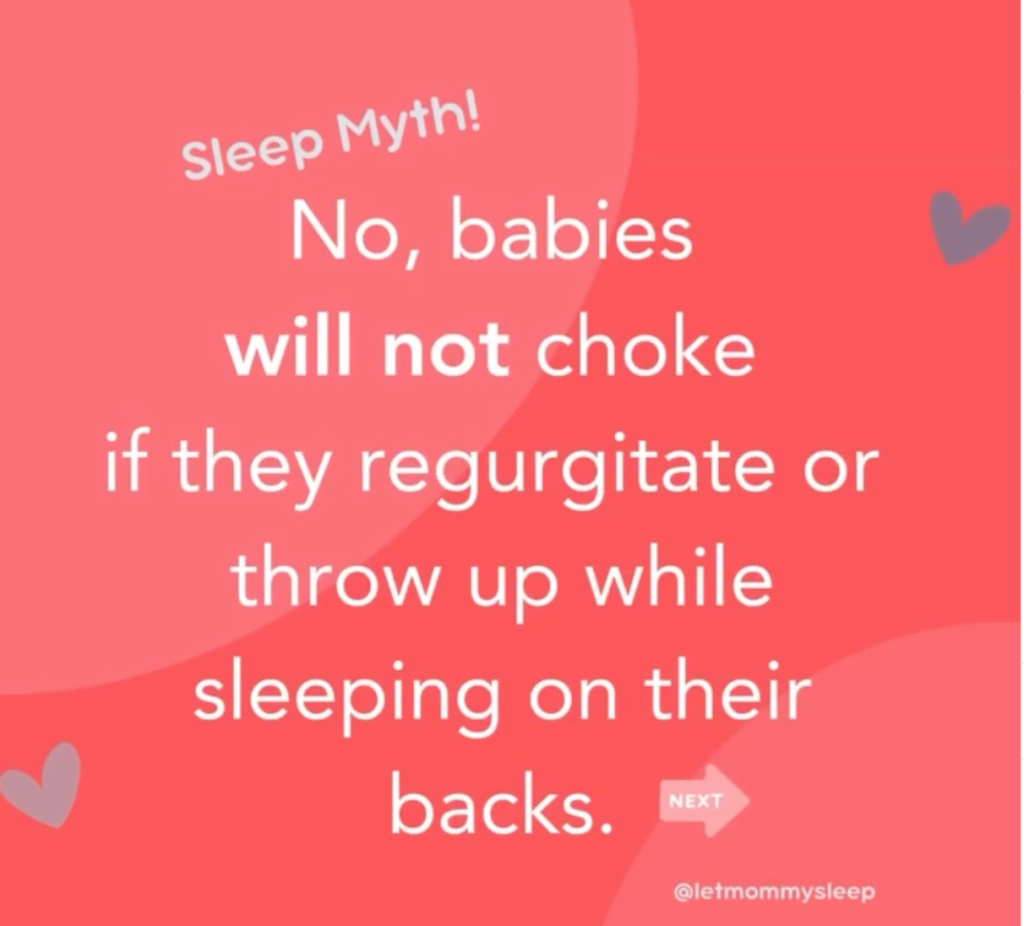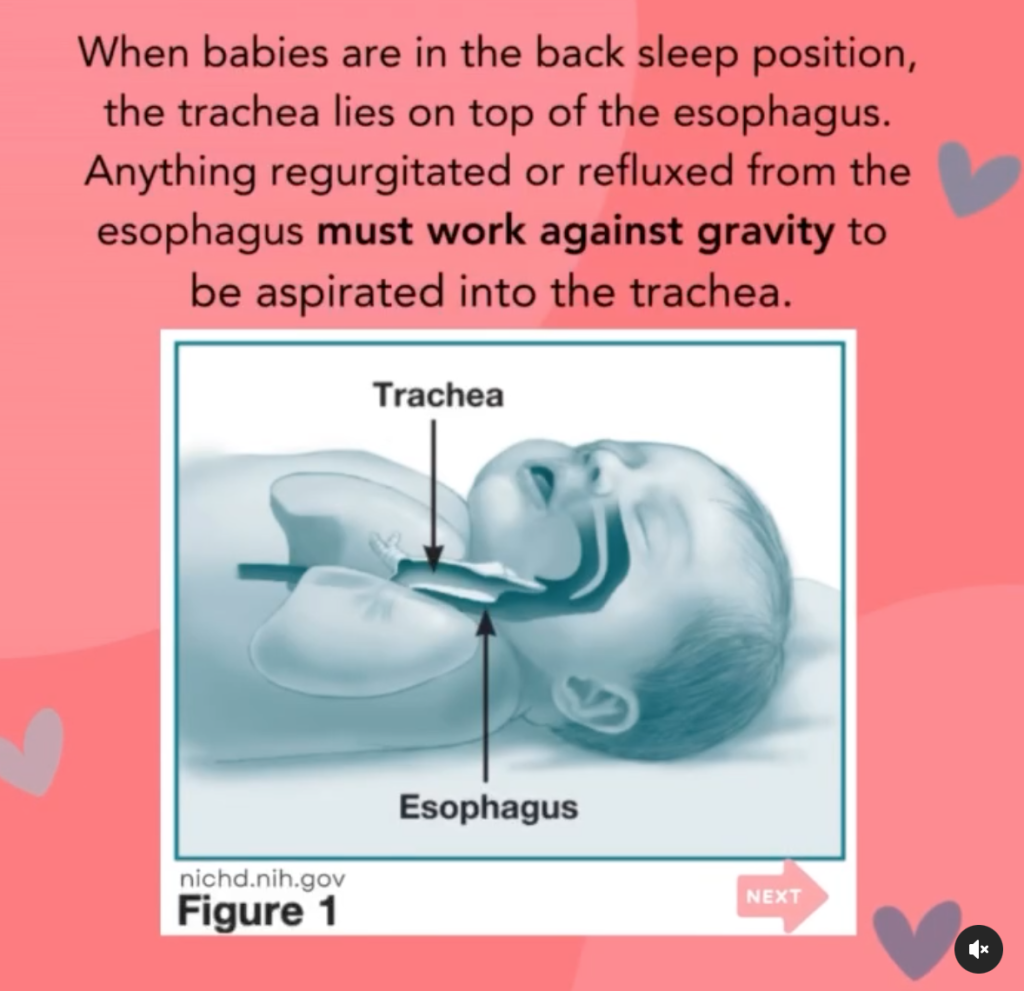10 Steps to Safe Sleep for Baby
Last updated October 1, 2025 – Below are the 10 steps to safe sleep for baby, with a breakdown of why each guideline is in place using the AAP’s evidence-based guidelines. You can also download all of the NIH Infant Safe Sleep and Maternal Health materials here.
Visite 10 Pasos para un Sueño Seguro del Bebé para esta información en español.

Steps to safe sleep for baby
- Back to Sleep – Sleeping flat on their backs is the safest sleep position for babies. This keeps their airways clear without any risk of the head lowering and restricting airflow. Tummy time is recommended during awake times so that baby can exercise! It also ensures that babies don’t develop flat head syndrome from being placed on their backs too much. Remember, back to sleep, tummy to play.
- Flat, clear surface: Place baby on a firm, flat surface clear of toys, crib bumpers, blankets & other items. This also means no crib wedges, sleep positioners or other items marketed to help infants sleep more soundly.
- Room Sharing: Keep baby in the same room as you, but not the same bed for at least 6 months. Previous advice was to stay in the same room for at least the first year of baby’s life. We certainly acknowledge that millions of families happily co-sleep with no problem and it’s often a cultural norm. But in terms of minimizing SIDS, the only safe space for baby is alone, in a crib free of sheets and pillows.
- Avoid Smoking: in the home and around baby. There’s no risk-free amount of smoke for your baby. This includes secondhand smoke.
- Avoid parent and infant exposure to nicotine, alcohol, marijuana, opioids, and illicit drugs.
- Breastfeeding: If you can, nursing your newborn for at least 2 months has been shown to reduce the risk by 50%. This counts for milk given from a bottle as well as from the breast. The reason breastmilk helps is because it promotes brain growth, builds up the immune system and reduces instances of reflux. Lowered instances of reflux keep airways clear.
- Vaccinate: All national and worldwide health agencies agree, and the data proves that immunizations reduce the risk of SIDS. Vaccines reduce the chance of infection which may affect breathing and stabilize immune responses.
- Don’t let baby overheat: Dress appropriately for the temperature. Being too warm can affect an infant’s ability to regulate their breathing, heart rate, and arousal from sleep.
- Give a pacifier: As the AAP has noted sucking on a pacifier requires forward positioning of the tongue, thus decreasing this risk of oropharyngeal obstruction. Be sure not to use a string or other attachment device when using a paci.
- Avoid products that go against safe sleep guidelines: While they can still be found at many resellers, inclined sleepers have been banned for sale. The Consumer Product and Safety Commission (CPSC) ban affects rockers, pillows, nappers, wedges and sleep positioners. This ban took effect in 2022. Infants should not be put in these for sleep. Read the full info in CPSC Ban and Recall of Inclined Sleepers



A Word about Weighted Sleep Sacs and Monitors
In 2022, the most recent American Academy of Pediatrics updates, the AAP addresses weighted sleep sacs and swaddles stating that Weighted swaddles, weighted clothing on or near the baby are not safe and not recommended. As far as swaddling goes, it is still recommended to help newborns stay comfortable but there is no evidence that swaddling is a SIDS deterrent. Learn How to Swaddle Like a Pro.
The AAP also specifically calls out cardiorespiratory monitors and other commercial devices that claim to reduce the risk of SIDS or other sleep-related deaths. There is no evidence to support these product claims. So the use of products claiming to increase sleep safety may provide a false sense of security and complacency. In other words, monitors and cribs that claim they will buzz or ring if baby’s breathing stops or heart rate lowers should be avoided.
We are Proud To Be A Cribs For Kids Safe Sleep Partner!, and every Let Mommy Sleep night doula and newborn caregiver is a Safe Sleep Ambassador. Following the steps to safe sleep for baby helps ensure that your baby sleeps safely and soundly every time.
Categories
- Corporate Care & Partners
- COVID19 Archive
- En Espanol
- Expert Guides
- Hiring a Night Nanny
- Infant Safety
- Infant Sleep Hub
- Newborn Care
- Postpartum Health
- Twins & Multiples
- Work as a Night Doula
- zPost Archives
